What Are Guitar Modes And How To Play Them

Learn everything there is to know about guitar modes—what they are, how many there are, and how to play them on the guitar.
Guitar modes can add texture to your songs while helping you solidify your scale and chord patterns. Once you learn the basic guitar scales, you are ready to move on to guitar modes. While modes may seem complicated at first glance, they are easy to understand when you take a closer look.
The seven guitar modes can turn an average song into a guitar masterpiece.
Let’s thoroughly examine the seven modes and learn how to play them on the guitar.
What are guitar modes?
Modes are essentially scaling inversions. All major scales start on the root note of the octave and follow the pattern: whole step, whole step, half step, whole step, whole step, whole step, half step. However, the seven modes invert this pattern creating different tones and moods.
In a major key signature, you can have seven modes. These seven modes are Ionian, Dorian, Phrygian, Lydian, Mixolydian, Aeolian, and Locrian.
Modes have their roots in ancient Greece (hence their Greek names). However, the ancient Greeks may not recognize the modal scales we use today. The modes we currently use were set in place by musicians in the middle ages. Then, bands such as the Beatles, the Grateful Dead, Jimmy Hendrix, Led Zeppelin, and others made guitar modes popular in modern rock music.
The 7 Major Modes.
The seven major modes are Ionian, Dorian, Phrygian, Lydian, Mixolydian, Aeolian, and Locrian. Each mode has its own unique sound and can bring a certain mood to your music.
Here are each of the seven major guitar modes explained.
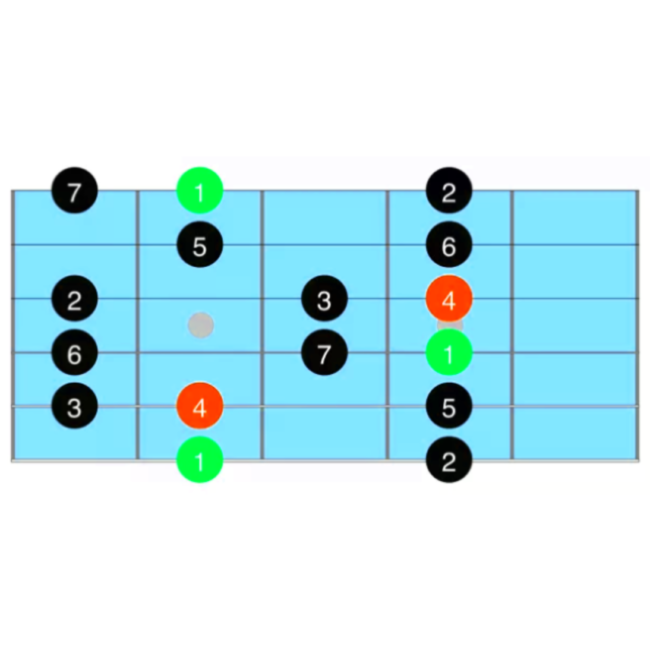
The Ionian mode (Major octave scale)
The Ionian mode may be the easiest of the seven to remember. (Hint: It’s just the major octave scale with a fancier name!)
You follow the interval pattern: whole step, whole step, half step, whole step, whole step, whole step, half step. This mode usually has an upbeat, happy sound. In the key of C, the Ionian mode would be your regular C to C note scale.
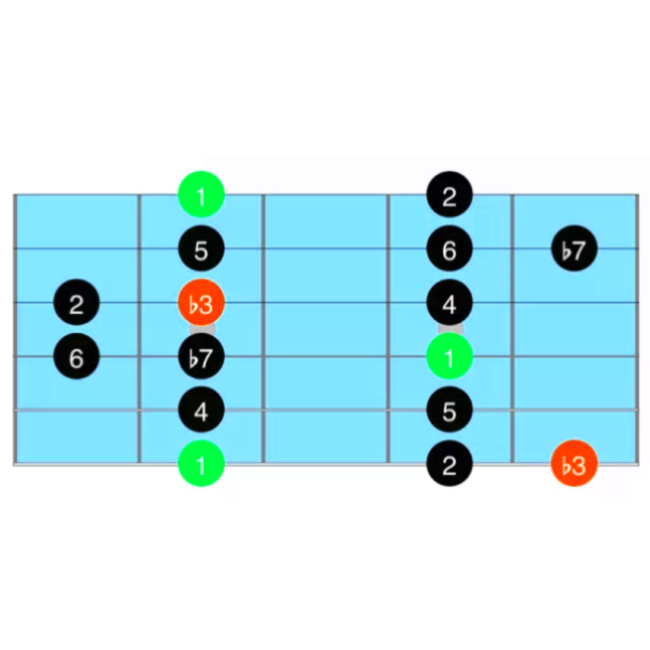
The Dorian mode
The Dorian scale is the second of the seven modes. Its interval pattern is a whole step, half step, whole step, whole step, half step, and whole step.
Notice that the Dorian mode inverts the major scale by taking the first “whole step” in the interval pattern to the end of the pattern.
As you know, the key of C has no sharps or flats. However, when you apply the Dorian mode to the key of C, you end up with E♭ and B♭ in the scale. These added flats give the scale a minor sound, adding a feeling of sadness or mystery.
Jimmi Hendrix plays Purple Haze using the Dorian mode.
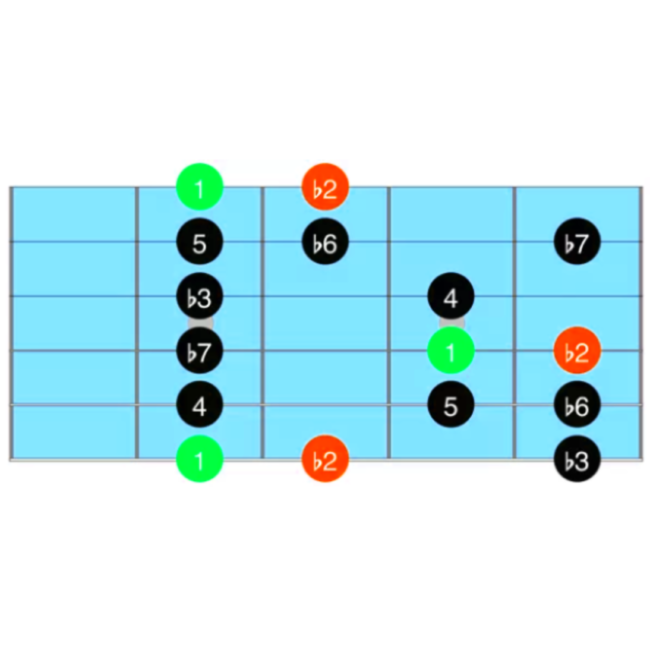
Phrygian
The third mode is Phrygian. It follows the pattern: half step, whole step, whole step, whole step, half step, whole step, whole step
Since so many tones of the Phrygian mode are minor, the mood is dark and brooding. Spanish music (such as Flamenco) often uses the Phrygian scale.
Listen to Pepe Romero use the Phrygian mode in the piece Malagueña.
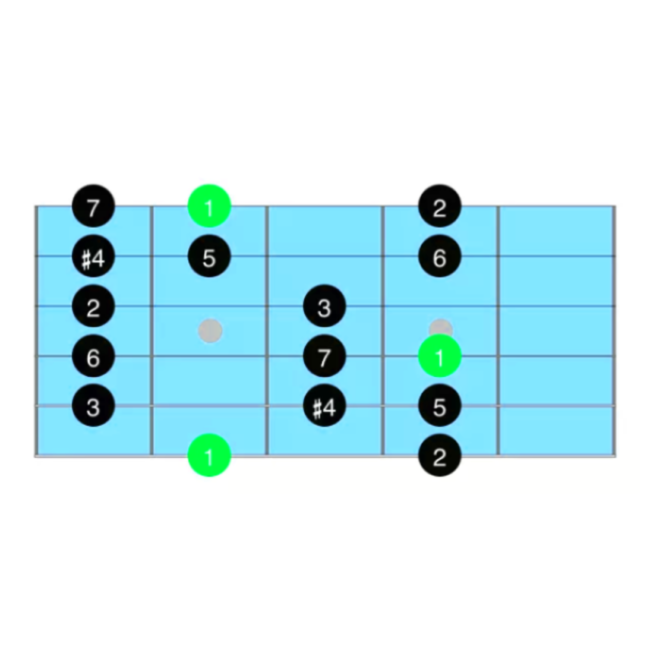
Lydian
The fourth mode is Lydian and follows the pattern: Whole step, whole step, whole step, half step, whole step, whole step, half step.
This mode has an augmented fourth note. It can sound bright and happy or poignant,
Fleetwood Mac plays one of her top hits, Landslide, in the Lydian mode.
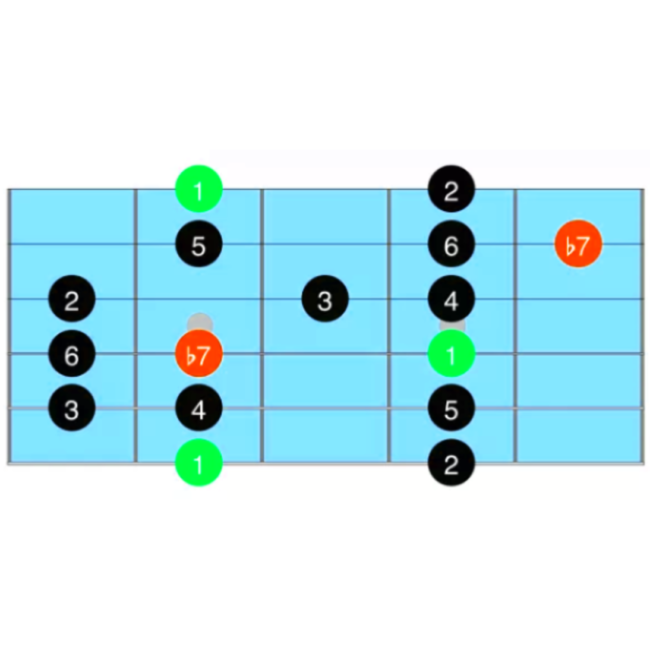
Mixolydian
The Mixolydian is the fifth mode, following the pattern: Whole step, whole step, half step, whole step, whole step, half step, whole step.
The Mixolydian scale doesn’t sound definitively major or minor. Its feeling is bittersweet. Both blues and rock make frequent use of this mode.
You can hear the Mixolydian mode in the Beatles’ Hey Jude.
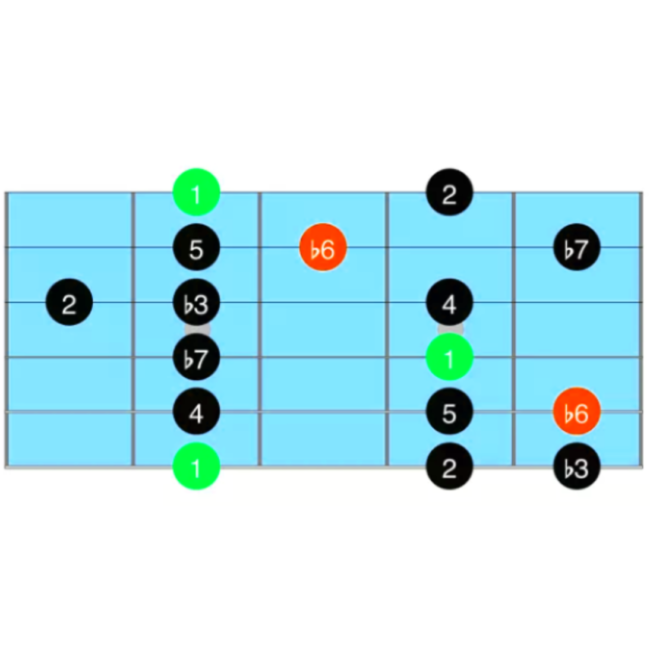
Aeolian (The natural minor scale)
Aeolian is the sixth mode and uses the pattern: Whole step, half step, whole step, whole step, half step, whole step, whole step.
This scale is identical to the natural minor scale. If you compare it to the Dorian mode, the Aeolian sounds even sadder and darker.
Led Zeppelin’s classic guitar song Stairway to Heaven is in the Aeolian mode.
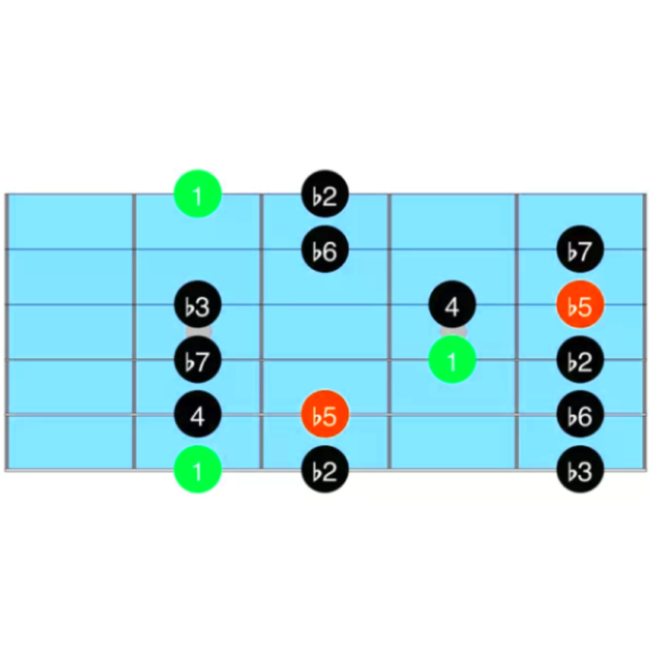
Locrian
The last mode in this order is the Locrian scale. This is the seventh mode, which uses the pattern: Half step, whole step, whole step, half step, whole step, whole step, whole step.
The Locrian scale sounds sinister and unresolved.
Some jazz pieces and alternative rock use the Locrian mode. However, this mode is the rarest of the seven modes.
Notice the discordant sounds of the Locrian mode in Björk’s Army Of Me.
As you listen to the different modes, you notice that Ionian, Lydian, and Mixolydian sound major. However, the Dorian, Phrygian, and Aeolian modes take on a minor sound. Locrian is also usually grouped with minor chords. However, the Locrian mode tends to sound more diminished or discordant than the others.
Each mode has its sound and mood. Now, how do we apply these seven modes to music?
When and how to use guitar modes.
As you see, each mode has a unique pattern and a mood. But how do you use modal scales in a song?
Modes add texture to your songs by bringing notes outside the usual scale. Unless your goal is to create dissonance, you want to use modes that harmonize well with the chords in your songs.
For instance, choose a minor mode for minor chords like the Dorian, Phrygian, or Aeolian mode. Using the Mixolydian mode can be a good choice if the chord is dominant. The Ionian and Lydian modes pair well with major chords since they share many of the same notes.
Choosing the best mode for your song adds a new depth to your guitar playing.
Tips to practice guitar modes.
After you learn the patterns of the seven modes, it’s much easier to play them on the guitar.
Here are a few tips for practicing guitar modes:
Go up with one mode and come down with the next.
Go through the modes in order. Take one mode up the guitar neck and come down with the following one.
For example, play the Dorian mode going up, then the Phrygian coming down. Next, go up with the Lydian mode, and come back down with the Mixolydian. In this way, you work through each scale and hear how these scale inversions relate to each other.
Group the modes by major and minor.
Instead of playing the modes in order, try grouping them by major and minor.
The three major modes are Lydian, Ionian, and Mixolydian. Then move on to the minor modes: Dorian, Aeolian, Phrygian, and Locrian. When you group the chords this way, they are easier to play than the original 1-7 order.
Play modes over chords.
Once you learn how each mode sounds and how to play them on the fretboard, you are ready to put them to use. Choose two or three chords and see which modes pair well with your chords. You can pick from the chord types in Guitar Chords for Beginners. Remember to use major modes with major chords and minor modes with minor chords.
Practicing modes and chords can help you improvise and work on guitar solos.
Learn the basics and experiment with guitar modes.
Guitar modes seem complicated at first. But once you take a closer look at their structure, they begin to make more sense. Modes can add a new layer of depth to your songs and are satisfying to play.
Brush up on guitar basics and finetune your finger skills by downloading a two-week free trial of Simply Guitar. You can take this app anywhere and learn to play guitar in just five minutes a day.
Once you have the basics, you can try guitar modes and build your own guitar solos.









